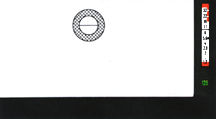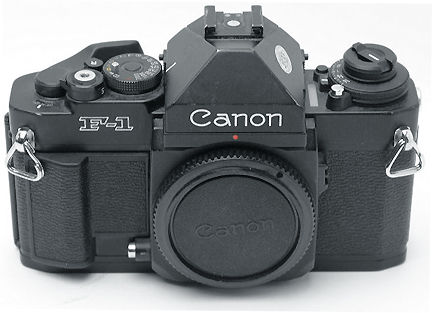 |
Multiple AE Modes Plus Manual The New F-1 was designed to satisfy such stringent professional requirements, multifaceted as one can called it. The basic camera is a match needle manual operation SLR. Attach optional accessories, however, and it becomes a multi-AE mode SLR capable of aperture-priority, shutter-priority and stopped-down automatic exposure. Yet it also allows full manual control whenever necessary. |
Manual Exposure Control For the F-1 users, there is nothing to pick on Canon's effort in the upgrade because the New F-1 is also a mechanical body, while on the other hand to satify those who are ready for more responsive tool with AE path. However, there are some photographers still prefer rely on their own experience and judgment to obtain the exact effect desired, after all, before the eighties, there have already took a bite on some form of automation with accessories like the Canon's F-1 Servo EE Finder. Well, for the purist as they called it, the New F-1 responds to this need by affording full manual control of all functions. The match needle system lets you fine-tune the exposure in case of subtle changes in light. And with a selective area or spot focusing screen installed, you can take readings of several areas of the subject.
| What kinds of situations call for manual control ? Tricky lighting or intentionally over or under expsosures. But since the New F-1 has options to alter the metering patterns by chosing the appropriate focusing screen (kind of messy by modern standard) by nevertheless, it was an exclusive Canon's offering only came with the New F-1.These capabilities was only seen in three years later again in 1984, the T70 which provides partial and center weighted average metering - minus changing the focusing screen, as the feature was built in. |
|
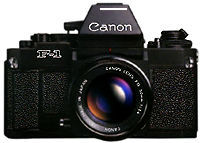 |
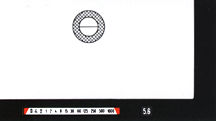 |
The viewfinder read-out is re-positioned below the image to avoid confusion with manual and shutter-priority AE. In the process, it changes from aperture information to a shutter speed display. |
Depth of field is increased by stopping down the aperture. Conversely, a larger aperture creates a shallower depth of field ñ an effect frequently employed to give a blurred background to portraits. Besides the aperture, the depth of field is governed by the focal length of the lens. Generally less critical with wide angle lenses or long-distance shots, it can be a vital factor in determining the sharpness of the image in close-up work or when using telephoto lenses over shorter ranges. Control of aperture is important in many photographic situations. Although the New Canon F-1 permit multiple variation of metering pattern, while in aperture priority automation, either partial or enter weighted metering is recommended.
Shutter-priority AE Canon has a very long and rich tradition of adopting shutter priority automation on their cameras. The exclusive and unique breech lock mount of Canon made them, along with Minolta's MD lenses the only two main players who were offering shutter priority automation in some of their selective bodies.The New F-1 is the only professional system SLR that provides shutter-priority AE ñ the ideal mode for fast-paced situations like this. It becomes possible by attaching either the AE Motor Drive FN or AE Power Winder FN. And the New F-1 offers a choice of no less than 15 shutter speeds, from 1/2000 sec. to 8 seconds.Such rapid-shooting potential are best suited for sports photographers or those involved with dealing fast and un expected event and happening. Just select a fast shutter speed and, shooting at the AE Motor Drive FN's maximum 5 fps, grab every action-packed moment. Whatever the subject matter, and however fast or intentionally slow to project movement or motion, can be best handle with a shutter priority based cameras. Although it is a narrow thought to think shutter priority AE is applicable only to sports or wildlife because it is another key component, other than the aperture which affects depth of field, to make a well exposed photograph in theory. Of cause, to a seasoned photographer, the variations in shutter speeds also syncronize with the variation and changes in aperture values.
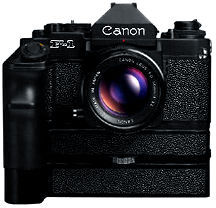 |
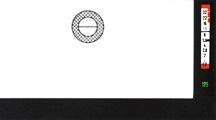 |
Thus, whatever the AE in photography is merely a convenient way of doing the imput of your preferences but since the New F-1 has aperture priority AE embedded, you can switch back and forth with both or back to manual control, as you wish. |
| Back to Earlier Page
|
Instruction
Manual:
Canon New F-1 Camera | Motor Drive FN | Canon High Speed Motor Drive
Camera
|
Main
Reference/Layout Map for body: HTML | PDF (471k)
Specifications: HTML | PDF (58k)
| Message Board |
for your New Canon F-1 SLR camera(s)
| Message Board | for your Canon optics
in a shared environment
| Message Board | Specifically for Dispose or Looking for Canon Photographic
equipment
| Back to Main Index Page | Canon New F-1 Website
Its
Concept, Its System
Metering Options,
Viewfinders, Exposures
Control, Reliability
Issues,
Shutter Mechanism; Motor Drives/Winder, Data Film
backs,
Flash photography, Focusing Screens, Macro/Close-up,
Remote photography.
Canon FD & FDn Lenses.
About this photographic site.
Home - Photography in Malaysia |
Copyright © 2000. leofoo ®. MIR Web Development Team.
Credit: Mr Richard Yeow, General Manager of camera and video division, Canon Marketing, Malaysia and Tony Kano, for being so supportive and granting permission to use some of the original content of Canon; Mr Philip Chong for patching some mistakes made earlier in this site. Made with a PowerMac, Broadcating with a RedHat Linux Server.
